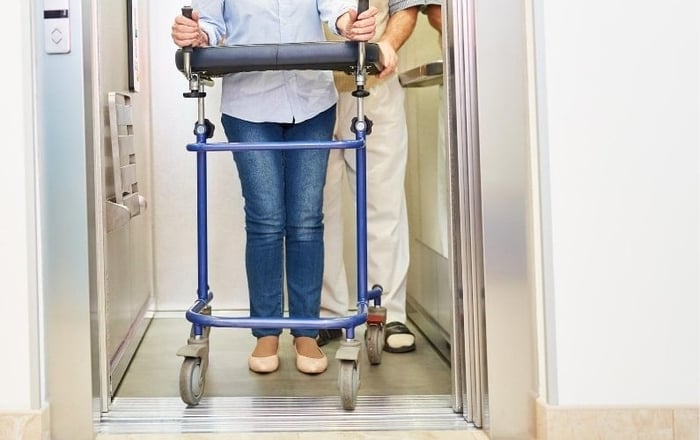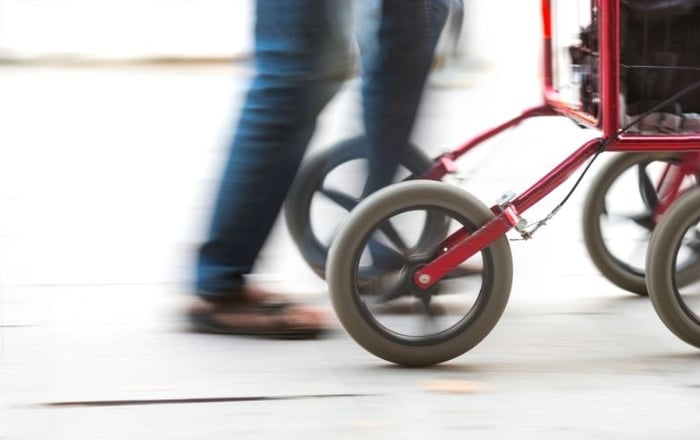Muscle and joint problems often require us to use mobility aids to move around. Read on to learn how to choose a suitable mobility device for your needs here.
How to Choose the Right Mobility Aid For You
Are you looking to purchase a mobility device, but aren't sure which one to choose?
Mobility devices can be extremely beneficial. Not only can they help you get from place to place, but they can also alleviate pressure from your joints and muscles.
But, in order to reap the most benefits from your mobility aid, you need to choose the right one. How do you know which one is best for you?
Check out this guide to discover how to choose the right mobility device.
Understand the Different Types
In order to choose the right mobility device, you need to understand the different options you have at your disposal.
Here are the different types of mobility aids you have to choose from.
Canes
Canes are one of the most popular types of mobility aids. Canes work similarly to crutches in that they support the weight of your body and help the load from your lower body to your upper body.
However, canes take less weight off of the lower body than crutches do. These devices also place greater pressure on your wrists and hands.
If you struggle with balance or are at an increased risk of falling, a cane is a good choice for you. However, you will need to know which type of cane to choose.
There are three main types of canes to choose from, which include quad, white, and forearm canes.
Quad canes have four feet at the bottom and this wider base allows for greater stability. White canes are for those who are visually impaired, and they are thinner and longer than the traditional cane.
If you need extra forearm support, then you'll want to opt for a forearm cane, as these allow for more weight to be distributed through your arms and wrists.
Crutches
Like canes, crutches transfer weight from your lower body to your upper body.
Crutches can be used singly or in pairs. They help you maintain an upright position and are typically best for those with short-term injuries, such as a sprained ankle.
There are several different types of crutches to choose from, including:
- Lofstrand crutches: Also known as forearm crutches, these are best for people with long-term disabilities
- Axillary crutches: Also known as underarm crutches, these are best for people with short-term injuries
- Platform crutches: These crutches are best for those with cerebral palsy or arthritis
You can speak to your doctor about choosing the right crutch for your needs.
Walkers
Walkers are another very common mobility device. They consist of a metal framework and four legs that provide support and stability to the user.
Those who suffer from a non-weight bearing injury will benefit from the use of a walker.
Basic walkers come with a 3-sided frame that the user places in front of them. To use the device, the user lifts the frame and then places it further in front of them. They then take a step forward and repeat the process.
Some walkers come with glides or wheels at the base of the legs, which allows the user to slide the walker rather than pick it up between each step. If you suffer from limited arm strength, this type of walker is best for you.
Here are some of the main types of walkers you may want to consider beyond the basic model:
- Rollators: These walkers consist of handlebars, four wheels, and a seat, making them best for people who need extra rest
- Knee walkers: These allow you to rest one knee/leg while propelling forward with the stronger one, making them best for those who are only suffering from an injury in one leg that's below the knee
- Walker-cane hybrid: This is a cross between a walker and a cane and it comes with two legs instead of a full-frame. If you need a bit more support than a standard cane, this is a good option
Walkers are considered very stable walking aids, and they're used by over 11% of the over 65 population in the US.
Wheelchairs
If you're unable to walk or shouldn't be putting any weight on your lower limbs, then a wheelchair is the mobility device for you. Additionally, many people who use walkers find wheelchairs to be more suitable when they need to travel great distances.
Wheelchairs can be propelled manually, pushed by another person, or powered electronically. If you suffer from a weaker upper body, then you'll probably want to invest in a wheelchair that's powered electronically.
Mobility Scooters
Scooters are similar to a wheelchair in that they also come with a seat. However, while most wheelchairs come with two wheels, most scooters come with three, four, or five wheels.
To use a mobility scooter, you'll rest your feet on plates and then use a steering wheel or handlebar to control your direction. Most mobility scooters are battery-powered.
If you suffer from low flexibility or upper body strength, then a mobility scooter is a good alternative to a wheelchair. If you're intimidated by using a mobility scooter for the first time, there are training classes you can partake in.
Guide Dogs
While most of the mobility devices we've talked about are for those who are physically impaired, guide dogs are for those who are visually impaired.
Guide dogs help those who are visually impaired walk and navigate obstacles. Additionally, many people with guide dogs find that they have a positive impact on their lives psychologically.
Which Mobility Device Is Right for You?
Now that you've read this article, you should have a better idea of which mobility device is right for you. Before you know it, you'll be moving around with ease thanks to your new mobility aid!
If you have any questions about selecting the right mobility device, contact us today.










